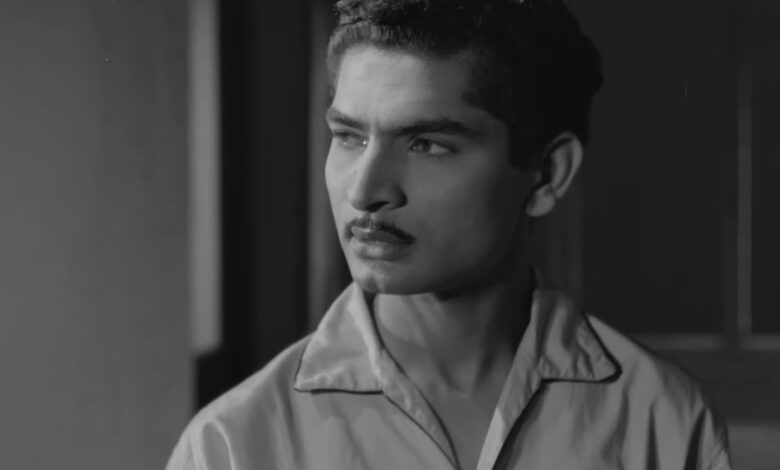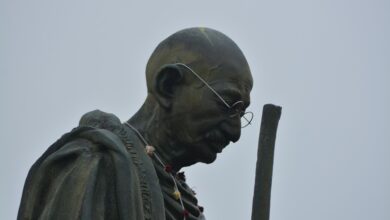When laughter wasn’t gross
Asrani’s effervescent comic presence lit up the screen in a way that felt intimate, familiar & utterly unforgettable

 For many of us who grew up in the 1980s and 1990s – at a time when television was still a family gathering around the set, when smartphones, Wi-Fi, streaming platforms like YouTube or Netflix were the stuff of science fiction – Asrani entered our lives like a breath of fresh air. He was part of that golden era of cinema where a shared film evening or a Sunday matinee was one of the rare portals of entertainment and togetherness. In that era, Asrani’s effervescent comic presence lit up the screen in a way that felt intimate, familiar, and utterly unforgettable.
For many of us who grew up in the 1980s and 1990s – at a time when television was still a family gathering around the set, when smartphones, Wi-Fi, streaming platforms like YouTube or Netflix were the stuff of science fiction – Asrani entered our lives like a breath of fresh air. He was part of that golden era of cinema where a shared film evening or a Sunday matinee was one of the rare portals of entertainment and togetherness. In that era, Asrani’s effervescent comic presence lit up the screen in a way that felt intimate, familiar, and utterly unforgettable.
What made Asrani so special – and so difficult to replicate – was the texture of his laughter, the gentle yet mischievous twinkle in his eyes, the unique style of dialogue delivery, and the effortless blend of sarcasm and warmth that he brought to every role. He never simply cracked jokes. He inhabited characters that made you laugh because you recognised something in them – the “friend of the hero,” the eccentric jailer, the quick-witted bystander, the bumbling sidekick – but always with a distinctive voice, a physicality of his own, and an affectionate undertone that made his presence deeply endearing.
When Asrani smiled, the audience smiled with him. When he raised his eyebrows or delivered that line, you felt joy ripple through the cinema hall. In the absence of multiple screens, mobile distractions, or streaming binge-fest, these films and his characters were shared cultural moments — moments when families laughed together, paused together, remembered together. And hence, his presence goes beyond mere entertainment: it became part of the nostalgia of childhood, of living-room laughter, of wide-eyed wonder for cinema’s capacity to delight.
Born 1 January 1941 in Jaipur (in a Sindhi-Hindu family whose roots traced to pre-Partition Sindh), Govardhan Asrani’s journey was anything but a straight walk into stardom. His father opened a carpet shop after migrating to Jaipur. Young Govardhan was reportedly weak in mathematics, uninterested in business, and driven instead by a passion for acting. While studying at St. Xavier’s School, Jaipur, and later Rajasthan College, he simultaneously worked at All India Radio in Jaipur as a voice artist – a telling sign of his early acquaintance with voice and modulation, which would later become his hallmark.
He moved to Bombay (now Mumbai) in the early 1960s in search of his big break. He trained at the Film & Television Institute of India (FTII), Pune, completing his course in 1966. His early films included Gujarati cinema (he worked in lead roles in Gujarati films in the 1970s and 1980s) as well as character or supporting roles in Hindi films.
His Hindi-film debut is often listed as 1967 for a Gujarati film, and his early Hindi cameo was in Hare Kaanch Ki Chudiyaan (1967), though his comic breakthrough would come later.
By the 1970s, Asrani’s career was in full swing. He became a frequently used comedian, character actor, and the favourite “friend” of the hero in numerous films. His knack for timing, expressive face, and unique cadence set him apart. For instance, he worked in Chupke Chupke, Chhoti Si Baat, Bawarchi, Abhimaan and many more films that have since become classics.
Of course, his most indelible moment came in the 1975 classic Sholay, where his portrayal of the eccentric British‐era jailer, famously delivering “Hum Angrezon ke zamane ke jailor hain…” became iconic. That scene remains etched in film memory for its perfect blend of earnestness and comic absurdity.
Over the decades, into the 1980s, 1990s and well into the 2000s, Asrani continued to reinvent himself. As the style of Hindi cinema shifted, he moved fluidly from being the hero’s friend or side-kick to playing quirky supporting roles, comic reliefs, cameo appearances, seasoned character parts. He worked in films like Jo Jeeta Wohi Sikandar, Hera Pheri, Bhool Bhulaiyaa, Bol Bachchan and more, thereby spanning multiple eras of Bollywood comedy.
For many kids of the 80s and 90s, like you and me, Asrani is not just a name in the credits. He is a feeling. A memory. A laugh in the darkened cinema hall, a punchline echoed in the home living room, a pause before the next scene, while we anticipated what he would do next. Asrani became, what could be called, a collective laughter, a common cultural currency.
What truly sets Asrani apart in the annals of Indian cinema is not just his unmatched comic genius but the sheer volume and versatility of his work. Over a remarkable career spanning nearly six decades, Asrani appeared in more than 350 films across Hindi, Gujarati, Punjabi, and other regional languages – a feat few actors have accomplished with such consistency and distinction. From his debut in the late 1960s to his final screen appearances in the 2020s, he remained an ever-present figure on the cinematic landscape. His filmography reads like a history of modern Hindi cinema itself – working alongside generations of stars – from Rajesh Khanna, Amitabh Bachchan, Dharmendra, and Hema Malini to Salman Khan, Akshay Kumar, and Ajay Devgn.
Whether it was his iconic role as the jailer in Sholay (1975), the witty companion in Chhoti Si Baat, the mischievous guest in Aaj Ki Taaza Khabar, the caring teacher in Jo Jeeta Wohi Sikandar, or his later comic turns in Hera Pheri, Bhool Bhulaiyaa, and Bol Bachchan, Asrani’s performances defined the soul of mainstream comedy. His ability to shift effortlessly from slapstick to situational humour, from emotional depth to parody, reflected a range that few comedians have ever matched.
Beyond acting, he also directed and wrote screenplays – notably Chala Murari Hero Banne (1977), a semi-autobiographical take on his own struggles in the film industry. His work was never limited by genre or generation. It evolved with time, ensuring that every decade had an “Asrani moment” – a burst of laughter that belonged to him alone. The volume of his art was not just measured in numbers but in the countless smiles, memories, and echoes of laughter he left behind in every Indian household.
His death on Monday, October 20, 2025, leaves a physical absence, but his oeuvre – of over five decades – remains. Every time we will see him on screen, now made easily available through the digital platforms, many of us from this generation will be transported back to that time of innocence, of family, of cinema as a communal celebration. And that is why his presence remains forever – in VHS tapes, in television reruns, in DVD collections, in smartphone memories, and in our hearts.
What Asrani (January 1, 1941 – October 20, 2025) did was he simply appeared, paused, looked, delivered the line, changed the tempo of the scene, and the audience laughed. Simple, pure, timeless.
Farewell Sir!




